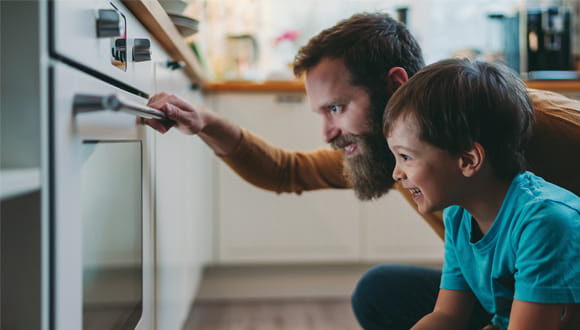Food Safety: Do You Really Need to Preheat Your Oven?
Sep. 27, 2021 - Katie McCallumWhether behind on preparing a holiday meal or just starving on a random Wednesday night, we've all skipped Step 1. We're speaking of preheating the oven, of course. Straight into the room-temperature oven it goes!
We skip it because there's an upside to not wasting time with preheating: Food that's ready quicker!
(By the way, this is a common misconception. We'd be remiss if we didn't point out that not preheating your oven can actually make food take longer to cook).
What's more is that we skip this step despite the known downsides of not preheating: Soggier pizza crust. Chicken that looks...pale. Cookies that don't rise quite right.
But, less-crispy crust and sad-looking chicken aside, is there a food safety drawback to putting raw meat into an oven before it's fully heated?
To preheat, or not to preheat: food safety edition
There's a reason we keep perishable foods either really cold or really hot and not the lukewarm temperatures in between.
It's to avoid the "danger zone" — which is between 40-140°F. This is the temperature range in which any microbes that may be present on raw food can grow most rapidly. The longer food is left in the danger zone, the more time these microbes have to multiply.
When food is kept colder than 40°F, the microbes can't grow well. Similarly, when heated above 140°F, the microbes can't grow and even begin to die.
Keeping raw meat out of the danger zone is critical for reducing your risk of foodborne illness — which doesn't just come with unpleasant side effects, it can be life-threatening in some cases. Never let food stay in the danger zone for more than two hours. (This drops to just one hour if the external temperature is 90°F or higher).
That being said, does preheating your oven really have anything to do with preventing food poisoning?
The temperature of an unheated oven certainly falls in the danger zone, but it's also unlikely for food placed in a heating oven to take longer than two hours to make it to a safer temperature.
Still, we're here to make the case for waiting until your oven dings the all-clear.
While preheating your oven isn't one of the more important food safety fundamentals (wash your vegetables!), it can be a helpful step in the right direction.
1. Preheating your oven can help make sure you're cooking food to the correct temperature
When a recipe or food instruction label lists an oven temperature and cooking time, the assumption is that you're going to first preheat your oven to that temperature.
If you skip this step, the recommended cooking time no longer applies. That's because it actually takes more time for your food to cook when you put it in before the oven is fully preheated.
For instance, that chicken breast that needed to bake at 425°F for 18-20 minutes probably needs more like...umm...well some unknown number of minutes beyond 20 if you don't preheat.
We know, we know. Cooking times aren't the end-all-be-all when it comes to food safety. But, they can be a helpful guide in ensuring that your food makes it to a safe temperature before you eat it — getting your food fairly close to the correct minimum internal temperature (and sometimes even right on the money).
It's still always best to do a final temperature check using a food thermometer, though — even if you did preheat. But at least you won't be blindly checking every few minutes like you would be if you skipped preheating and had no clue how long that chicken breast actually needs to bake.
While we're at it, here's a quick guide to the minimum cooking temperatures for foods commonly prepared in an oven:
- Chicken: 165°F
- Beef, lamb or veal roast: 145°F
- Pork or ham: 145°F
- Ground beef, pork, veal or lamb: 160°F
- Ground turkey or ground chicken: 165°F
- Egg-based dishes (frittata or quiche): 160°F
- Fish: 145°F
- Casseroles: 165°F
- Leftovers (includes precooked ham): 165°F
2. Preheating can also help keep your food from spending unnecessary time in the danger zone
Ever gotten into a hot tub on a cold winter night while it was still heating instead of when it was already hot? It's not ideal.
Not preheating your oven is like that, but for your food, which has more serious danger-zone implications.
Preheating your oven helps ensure your food goes from refrigerator cold to blazing hot more quickly — spending as little time in the danger zone as possible.
And even if this is a short amount of time, just know that some bacteria can multiply in the danger zone in as little as 20 minutes. And your food probably already spent some amount of time sitting at room temperature while you were seasoning it, too. Why let it add up?
Morale of the story: Just wait the 10 minutes or so it takes to preheat your oven. Especially since there's no advantage to rushing it.


